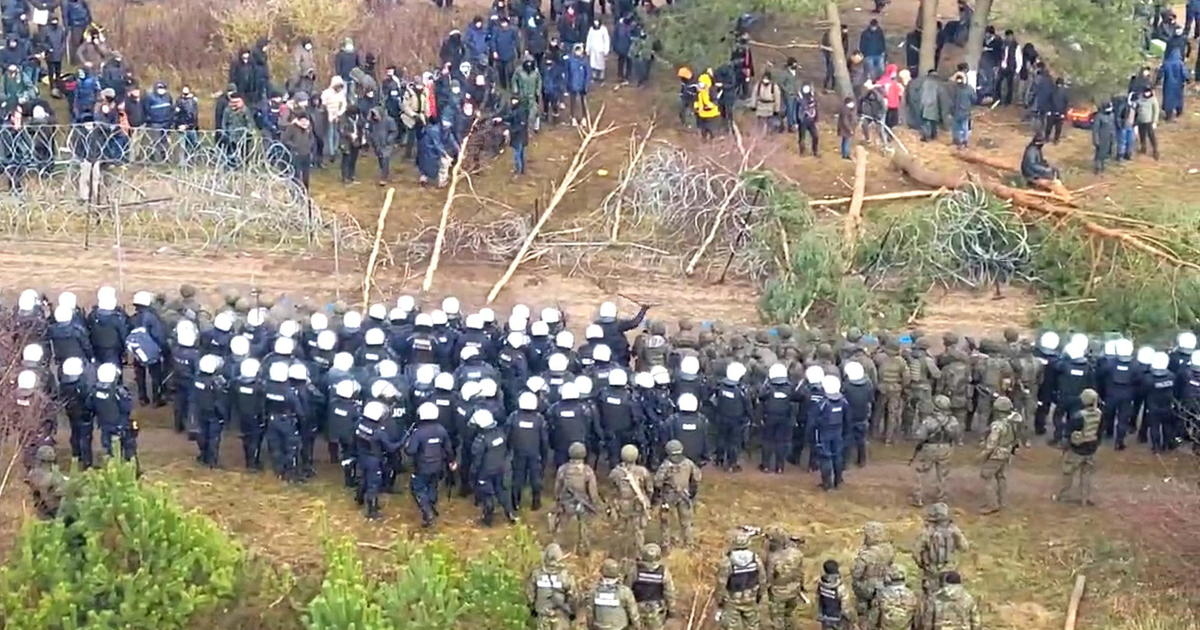As the United States and the European Union continue to grapple with the challenges brought on by large waves of immigrants arriving at their borders, the issue of weaponized migration has resurged, with nations looking to cause problems for their western adversaries. By encouraging and facilitating the mass movement of people, Venezuela, Russia, and Cuba, among other nations, have used these hybrid attacks to extract concessions, embarrass adversaries, sow internal division, and for other malign purposes. With an increasing need for governments to manage the influx of people, a strong understanding of the causes and motivations of weaponized migration is required to craft effective policy responses.
Weaponized migration, by definition, is the concerted effort of mobilizing and facilitating the transportation of migrants towards a border, with the goal of coercing the government of a neighboring country to take a specific action. Countries engaged in weaponized migration may have ultimate aims ranging from political concessions from an adversary to larger regional destabilization. Over the past few years, there has been a concerted effort by Venezuela, Cuba, and Nicaragua to overwhelm American borders and escalate political pressure on the Biden administration. Historically, Cuba and Haiti have engaged in weaponized migration against the United States, since the 1960s, as part of an effort to obtain favorable policies, military support, or to push for the end of restrictive measures. An infamous case is the 1980 Mariel Boatlift, when Fidel Castro organized the transportation of 125,000 Cubans to Florida, overwhelming the US Coast Guard and fracturing approval of the Carter administration.
Countries that engage in weaponized migration are often politically and militarily weaker than their adversaries and use the tactic as a way to wage asymmetric warfare against the targeted country. For Belarus and Russia, weaponizing migrants has been a powerful tool to overwhelm the European Union, allowing them to cause problems for the EU without prompting a military response. Previously, Belarus opened travel agencies across the Middle East, posing as an unofficial route into Europe via the Belarusian-Polish border, with the goal of embarrassing these governments and sowing internal division . Russia also sparked concern after announcing Kaliningrad would be open to airlines from foreign countries which might encourage increased migration over the border into Poland and the European Union. As the Modern Warfare Institute explains, the Kremlin is weaponizing migrants to create a domino effect where the social welfare systems of EU countries are overwhelmed as a result. Following this, tensions between migrants and locals bring a rise of far-right populist governments that then drive a more pro-Russian agenda. In the United States, on the other hand, Cuba has been sending migrants to Nicaragua with the help of the Venezuelan government, utilizing Nicaragua as the geographic gateway to the United States. Amidst the greater immigration crisis at the US border and the political divide among American voters, Maduro’s regime in Venezuela has used this tactic to extort lightened sanctions from the Biden administration.
The responses to weaponized migration by the United States and the European Union have differed, based on the distinct political challenges posed in each case. Poland has had to bear the brunt of the efforts by Russia and Belarus as it lies on the eastern front of the EU. The unique nature of the European Union has limited Poland’s ability to build an independent immigration policy, as national governments are responsible for external border control, but within most of the bloc there is borderless travel. The EU formally passed a pact in May that established rules to manage migration and establish a common asylum system, although both Poland and Hungary opposed the measure. Despite these institutional limits, Poland has heightened physical security on its borders, completing a steel wall at the border with Belarus and an electronic barrier at the border with the Russian exclave, Kaliningrad. Physical border security has become the primary response by the Polish government, as Russia and Belarus weaponize migrants to divert Polish resources away from supporting Ukraine. While Poland is limited in policy response due to the EU, the United States has engaged in a more encompassing response to cases of weaponized migration. In May, the White House, State Department, and Department of the Treasury responded to Nicaragua’s actions by sanctioning Nicaraguan-based entities, and issued a policy alert that warned airlines about their exploitation by the Nicaraguan government. The approach of the US government aims to deter the Nicaraguan government from adding to the burden at the southern border as immigration remains a highly-polarized domestic issue.

(Image from CBS: standoff between soldiers and migrants at the Belarus-Poland border)
While the EU and the United States face unique challenges in the face of increased migration, the use of weaponized migration presents a real threat to borders, as resources and personnel are overwhelmed. Countries engaged in weaponized migration aim to destabilize other nations or regions to advance broader military or political objectives. Despite the different motivations a country may have for weaponized migration, it is vital for targeted countries to understand the strategy of adversaries to respond effectively.
For more information on the weaponization of migration, check out the Global in the Granite State episode between WACNH Executive Director Tim Horgan and professor Kelly Greenhill.
By: Lucas Gendron, WACNH Intern
